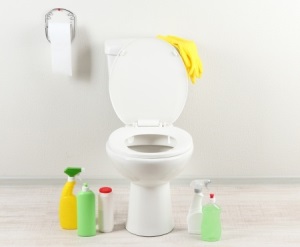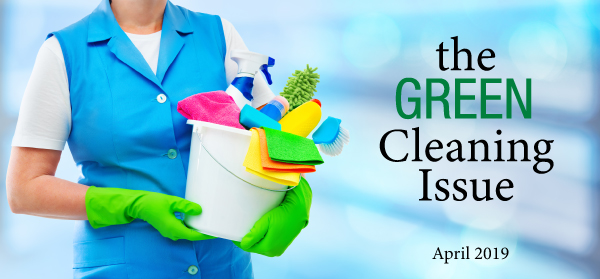There’s no such thing as a “green” disinfectant, according to the EPA. Disinfectants are designed to kill and so do not meet “green” expectations.
There’s no such thing as a “green” disinfectant, according to the EPA. Disinfectants are designed to kill and so do not meet “green” expectations.
Except for the EPA-established TANCS system used exclusively in the Advanced Vapor Technologies Ladybug…the only EPA-recognized disinfection device to date and which meets both the EPA standards for disinfection AND all green expectations! The TANCS system is the ONLY device that the EPA has validated as a disinfection device!
Even more important from this article: the EPA will not accept green-certified products for registration as disinfectants, nor will the EPA allow green certifications of products to endorse product claims about disinfection.
Lesson: there’s a HUGE difference in being an EPA-registered disinfectant and “meeting EPA standards for disinfection.” Make sure your company’s marketing claims don’t overstep their bounds!
The following appeared in various research studies and reports through May 2011, as reported at CleanLink:
Disinfectants are designed to kill, hence, they are not considered “green.” Disinfectants, however, are necessary in specific applications, such as an operating room. This is where product usage and facility priorities come into play. The BSC needs to work with the facility to identify what kill claims are necessary and determine what types of products carry those claims. From there, the BSC can try to find the “greenest” product.
The “greenest” option may include a neutral pH (safer for the worker than something highly alkaline), low or no VOC (improves the indoor air quality for building occupants), or no phosphates (that can be harmful to aquatic life).
BSCs should also consider the intended product use. Infection control through disinfectant use is important in high contact areas (door handles, faucets, etc.). Low contact areas, like floors, may be better served with a good cleaner. The BSC should be willing to discuss these alternative cleaning options, as well as alternative chemical options, with the facilities they service.
— Rebecca S. Kaufold, chemist, Spartan Chemical Co., Inc., Maumee, Ohio.
Even though in the United States there are currently no green certified disinfectants (as not allowed by EPA), BSCs should review and compare the following attributes in disinfectants and advise their customers of that fact and why they are using a particular disinfectant.
First, look for disinfectants that do not contain Nonylphenol Ethoxylates (NPEs) or octylphenol polyethoxylates (OPEs) and have a pH value close to 7. Second, compare level of detergency (cleaning ability and more is better). Third, look at the parts per million (PPM); the higher the better. Fourth, look to ensure the disinfectant has any required kill claim. For example, if the customer is concerned about swine flu (H1N1), ensure that specific kill claim is on the label. Lastly, look for a disinfectant with very broad kill claims.
More importantly, advise the customer that you will not be overusing disinfectants (just because they are usually less expensive than a quality cleaner), and when you do use them, it will be with proper procedures — pre-clean, apply disinfectant, allow required dwell/wet time, rinse or wipe dry as per label instructions.
— Mike Sawchuk, vice president, Enviro-Solutions/Charlotte Products, Peterborough, Ontario, Canada.
The US EPA office responsible for registrations is not allowing certification of disinfectants or sanitizers by organizations such as Green Seal or EcoLogo. Similarly, they are not letting companies claim their disinfectants are “green” or “environmentally preferable.” The reasons are complicated and are based in the Federal Insecticide Fungicide and Rodenticide Act (FIFRA). The bottom line is companies can’t claim their products are green due to FIFRA.
BSCs should use the right product based on their needs. Killing bacteria, viruses, and mold is an important part of a sustainable cleaning service. Work with your supplier to get the right product for the job.
— Dan Daggett, Ph.D., manager, Corporate Sustainability, Diversey Inc., Sturtevant, Wis.
Interestingly enough, a recent article published by Infection Control Today, indicates the mechanical removal of germs was more important than the chemical or actual disinfectant, when cleaning hard surfaces. Even when disinfectant and/or sanitizing products are used, the proper dwell time isn’t allowed. Nothing can replace a good general cleaning program and choosing safer cleaning products with low VOC’s with a minimal to no impact to the user and environment is the best solution.
— Brent Crawford, president, Core Products Co., Canton, Texas.






